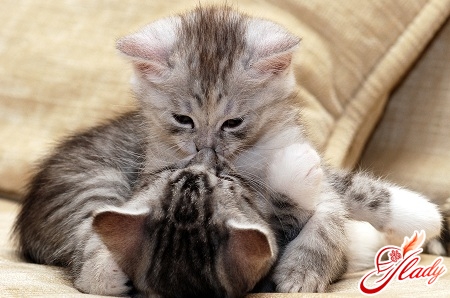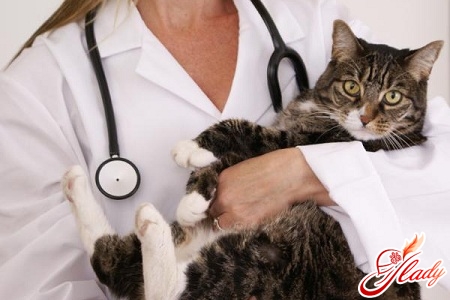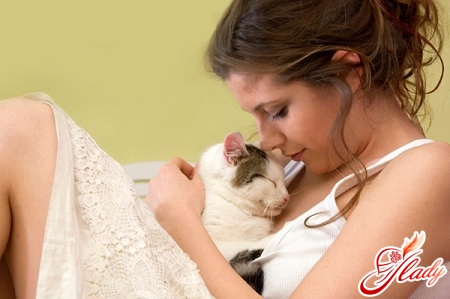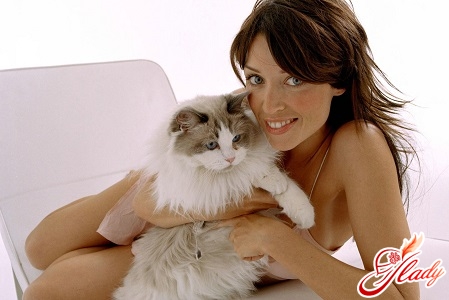 Cats are amazingly prolific creatures.Already from the age of six months (and some from four months!) they become capable of fertilization and reproduction of their own kind. They retain this ability literally until the last days of life. So such a concept as menopause in cats does not exist. And if you do not intend to rejoice at the new offspring of your pet at least twice a year, then most likely you will decide to sterilize her. Today, this operation has become very popular with many cat owners. Firstly, it gives a 100% guarantee of reproductive sterility of your cat. Secondly, this operation is tolerated by animals quite easily and, as a rule, does not have any serious consequences. And thirdly, caring for a cat after sterilization does not require any special skills or financial costs. And although caring for a cat in the postoperative period is not so difficult, you should still know some rules. So let's figure out how to care for a cat after surgery, and what surprises to be prepared for.
Cats are amazingly prolific creatures.Already from the age of six months (and some from four months!) they become capable of fertilization and reproduction of their own kind. They retain this ability literally until the last days of life. So such a concept as menopause in cats does not exist. And if you do not intend to rejoice at the new offspring of your pet at least twice a year, then most likely you will decide to sterilize her. Today, this operation has become very popular with many cat owners. Firstly, it gives a 100% guarantee of reproductive sterility of your cat. Secondly, this operation is tolerated by animals quite easily and, as a rule, does not have any serious consequences. And thirdly, caring for a cat after sterilization does not require any special skills or financial costs. And although caring for a cat in the postoperative period is not so difficult, you should still know some rules. So let's figure out how to care for a cat after surgery, and what surprises to be prepared for.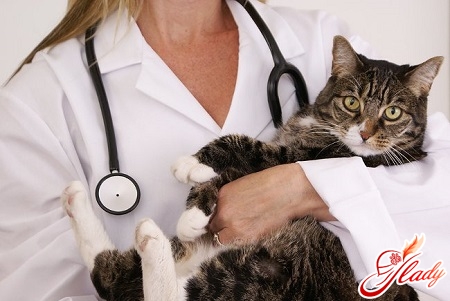
Immediately after surgery
If we are talking about ovariohysterectomy, then this isabdominal surgery, which is performed under general anesthesia. Therefore, the very first features of animal care after such an operation are monitoring its behavior after anesthesia. But you need to take care of the operated cat even before the operation. For example, you need to put a warm bedding in the carrier or bag in which the operated cat will go home. And it is even better to wrap it in something warm on the way back. The fact is that after the operation, the cat's body temperature will drop and the animal will be cold. The first day after the operation is a time of emotional upheaval for the owners. After all, they will have to watch how the animal comes out of anesthesia, and this is, frankly, not a pleasant sight. Imagine what it is like to watch the helpless wiggling of paws, uncoordinated movements and the look of despair of your beloved cat. Your task during this period is to protect the cat, as it can fall while walking, bump into walls and corners, and confuse the direction of movement. A cat coming out of anesthesia can suddenly jump up and try to run, it can get tangled in wires and threads and even get injured. Therefore, all potentially dangerous objects must be removed, and the cat itself should not be placed on a sofa, armchair or bed or other high pieces of furniture. Organize a temporary comfortable warm bed for the cat on the floor, in a place protected from drafts. Make sure that the cat lies only on its right side, as otherwise the load on the heart of an animal weakened after surgery will increase. Do not be alarmed by behavior that is atypical for your pet. When coming out of anesthesia, the cat can suddenly wake up and jump up, scratch its paws on the floor or on the bedding, hiss or meow. At this point, its behavior is inadequate. However, the animal is frightened by its condition no less than you are. So try to calm the sufferer. Involuntary urination and vomiting are possible in the first hours after sterilization. Therefore, be prepared for such trouble and make sure that the cat moves on surfaces that can be easily washed later. And it is also necessary to ensure that the animal sleeping after anesthesia does not choke on vomit. If the cat cannot lap up water on its own yet, but wants to drink, then give it water from a pipette - the cat does not need a lot of water at this moment, it is important that the mouth does not dry out. And another scary moment - the open eyes of a cat sleeping after anesthesia. Yes, cats do not close their eyes even during surgery. Therefore, you need to put drops in the eyes of a special solution and close and open the animal's eyelids every twenty minutes until the cat begins to blink on its own or simply closes its eyes. However, you will definitely get more detailed instructions from the veterinarian when you pick up your cat after the operation.
Aftercare
In about a day your kitty will recover fromanesthesia and will begin to behave quite adequately, although its movements will still be uncertain. The animal will be able to fully coordinate its movements only after three or four days. By the way, the animal may refuse to eat during this entire period. However, the cat needs to be fed. The first feeding after the operation is allowed after 24 hours, and the animal can and should be given water after three hours. The diet and feeding schedule can be maintained as before and as usual for the animal. However, do not give it food that can cause constipation or diarrhea. All further care for the cat after the operation comes down to the treatment of the surgical sutures. Cats are not bandaged after the operation, since the animal can easily remove the bandages. You will receive your pet from the operating room dressed in a special blanket with ties on the back. The animal should be in this blanket all the time until the sutures are removed. To treat the sutures, the blanket does not need to be removed completely. It is simply carefully pulled off the hind legs, and then put back on. The sutures must be treated according to the instructions received from the veterinarian. Chlorhexidine is usually used for this. By the way, this seemingly convenient and safe blanket may be associated with potential dangers for the animal. For example, a cat that has recovered from post-operative ailments may consider itself quite healthy and begin to lead its usual active lifestyle. This extreme cat will easily start jumping on nightstands, sofas, tables and windowsills, and it is unlikely that it will be able to do this gracefully and dexterously as before. It is possible that the frisky cat will simply not reach the intended target, will catch on something with the ties from the blanket and hang. Believe me, it will be very difficult to remove the poor thing from such a hanger, because the discouraged animal will begin to actively resist this, wriggling, hissing and using claws and teeth. And if this happens in your absence, the consequences can be most dire. Therefore, for about two weeks (until the stitches and blanket are removed), try to limit the cat's movements around the house. In fact, this is what caring for a cat after sterilization consists of. If your animal is healthy, and the surgery was performed in a clinic with a good reputation, then no serious complications should arise. However, at the slightest suspicion of possible postoperative complications, be sure to contact a veterinarian. In this case, it is better to be safe than sorry. So be attentive to your cat and remember that we are responsible for those we have tamed. We recommend reading:





